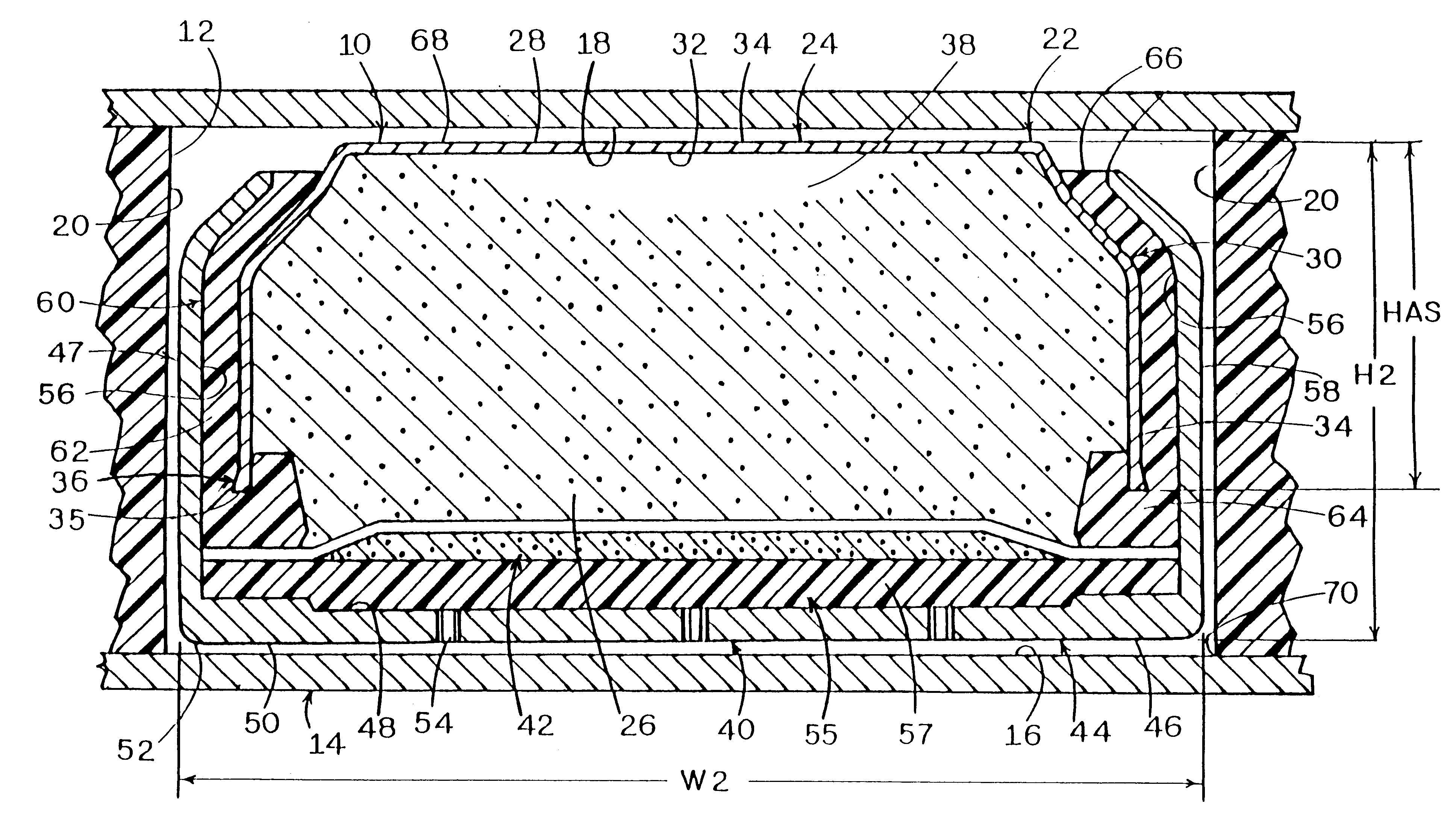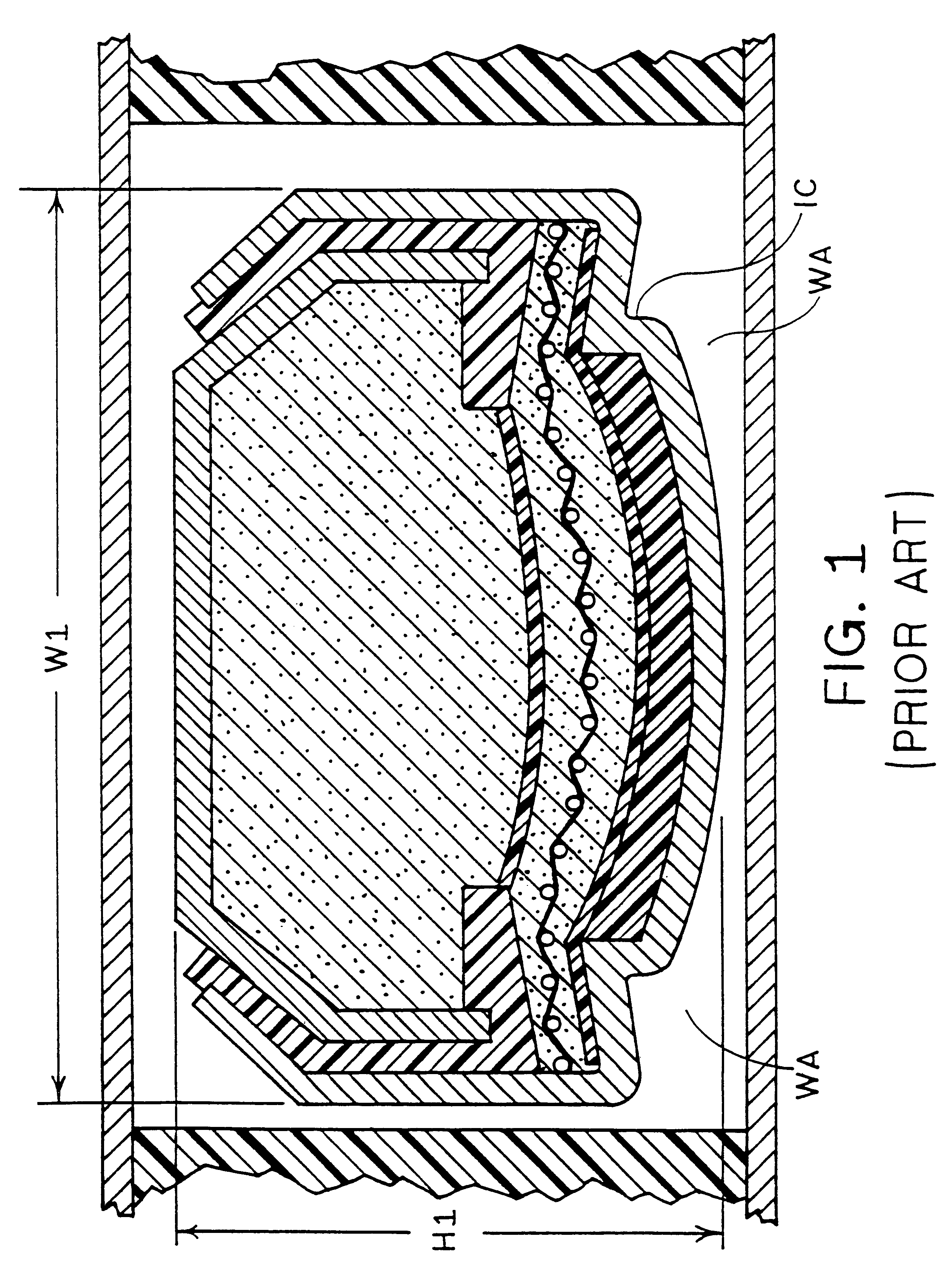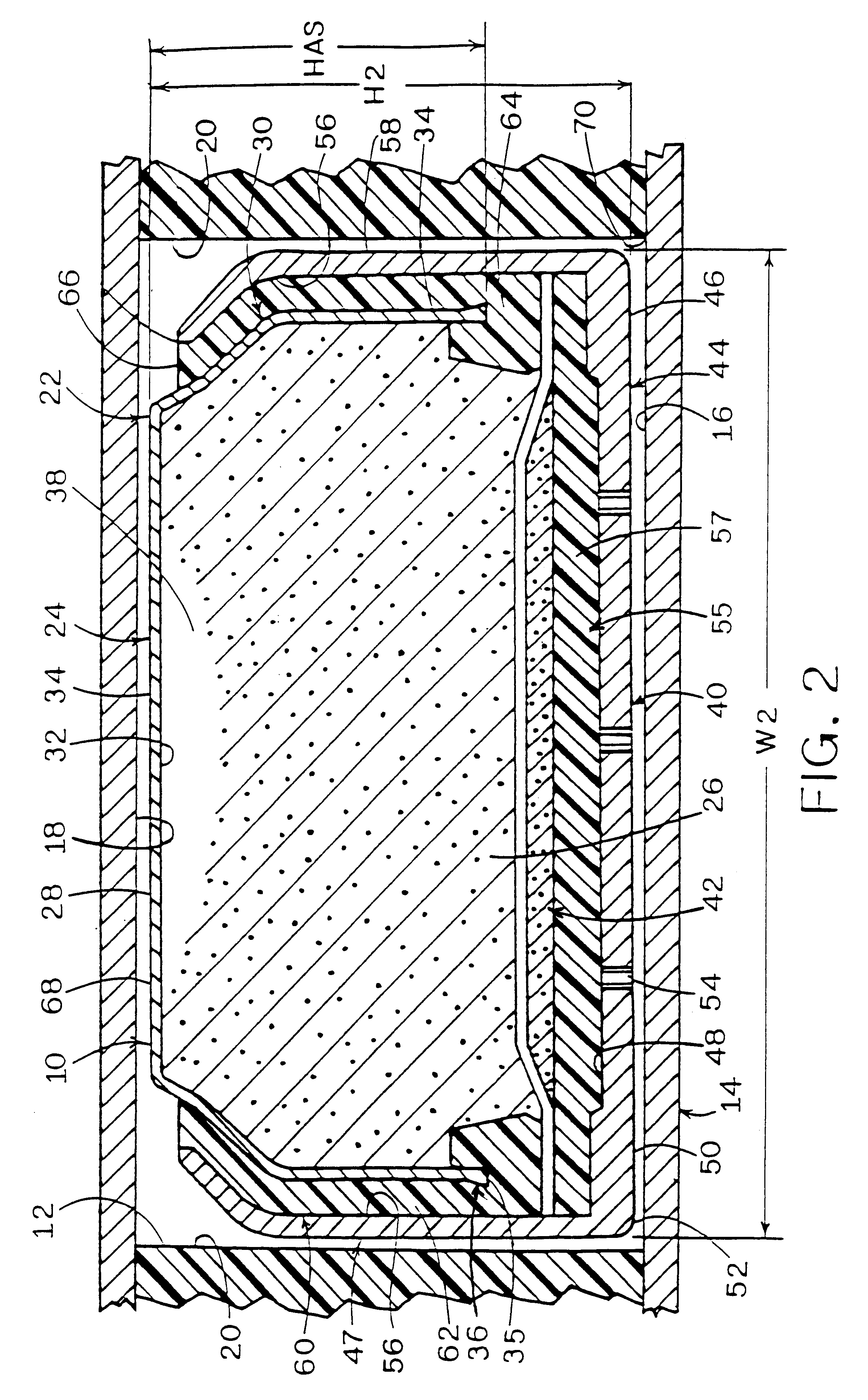Electrochemical cells and components thereof
a technology of electrochemical cells and components, applied in the field of electrochemical cells, can solve the problems of wasting volume that could be occupied, limited size of hearing aid cells, etc., and achieve the effects of less elongation, less ductility, and less elongation
- Summary
- Abstract
- Description
- Claims
- Application Information
AI Technical Summary
Benefits of technology
Problems solved by technology
Method used
Image
Examples
examples 2 , 9 , 16
Examples 2, 9, 16, and 23 represent generally the upper portion of the range of volume efficiencies that can be achieved using the teachings herein, wherein the upper portion of the range is generally represented by the equation shown as a first line in FIG. 10 and expressed as
0.77+Log.sup.10 (Overall Volume)*.20.
Linear Regression Analysis of the values represented by Examples 2, 9, 16, and 23 is shown as a second line in FIG. 13, represented by the equation
0.80+Log.sup.10 (Overall Volume)*.281.
A third line, generally connecting the points for Examples 2 and 16, suggests an equation of
0.77+Log.sup.10 (Overall Volume)*.28.
A fourth line, representing the equation
0.69+Log.sup.10 (Overall Volume)*.22
represents generally an incremental step in improving Volume Efficiency, using the concepts of the invention.
The equation
0.65+Log.sup.10 (Overall Volume)*.20
generally represents a line showing a minimum improvement over all prior art cells.
Table 3 gives representative values for the several ...
PUM
| Property | Measurement | Unit |
|---|---|---|
| thickness | aaaaa | aaaaa |
| thickness | aaaaa | aaaaa |
| thickness | aaaaa | aaaaa |
Abstract
Description
Claims
Application Information
 Login to View More
Login to View More - R&D
- Intellectual Property
- Life Sciences
- Materials
- Tech Scout
- Unparalleled Data Quality
- Higher Quality Content
- 60% Fewer Hallucinations
Browse by: Latest US Patents, China's latest patents, Technical Efficacy Thesaurus, Application Domain, Technology Topic, Popular Technical Reports.
© 2025 PatSnap. All rights reserved.Legal|Privacy policy|Modern Slavery Act Transparency Statement|Sitemap|About US| Contact US: help@patsnap.com



